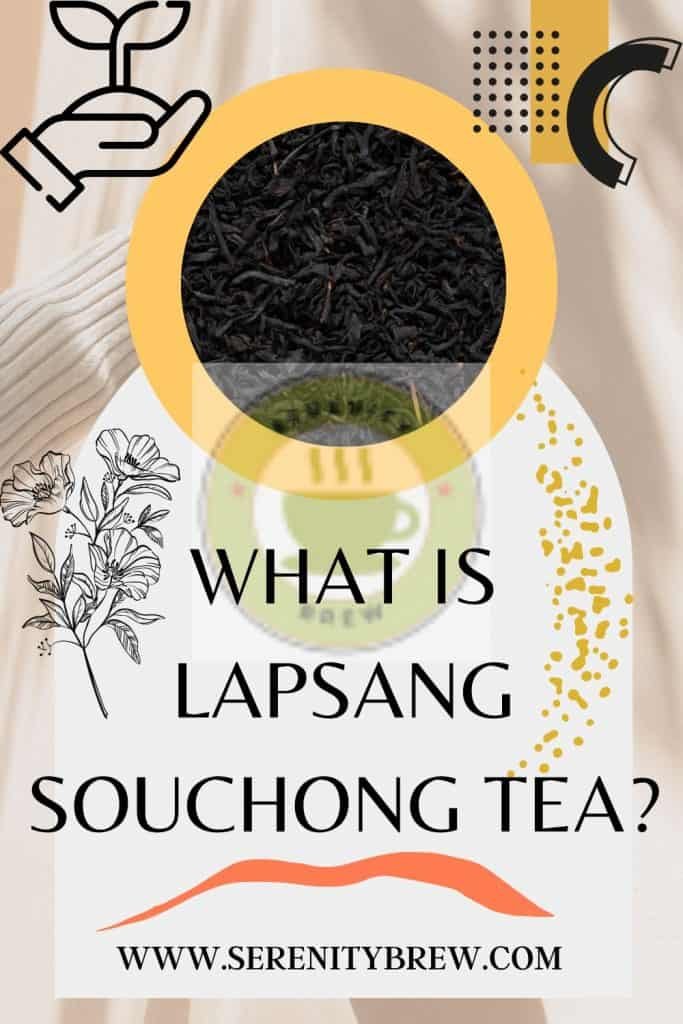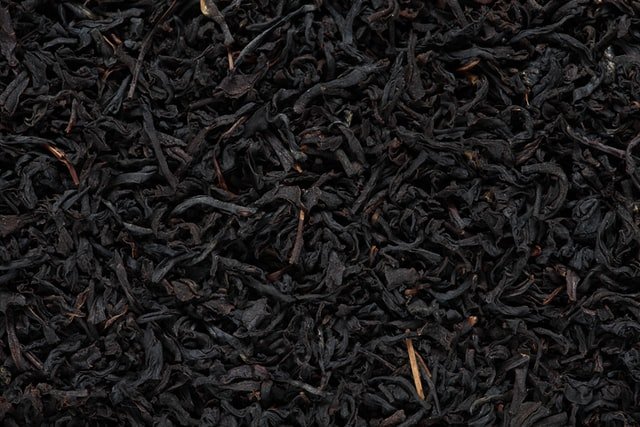
We are sure that you have heard of Lapsang Souchong tea.
Today we are going to talk about this peculiar tea, one of our favorites, which leaves no one indifferent since you love it or hate it. it is a tea with personality and ideal for breakfast either alone or with milk.
Lapsang souchong is a black tea originating in the Wuyi region of the Chinese province of Fujian that is characterized as a smoked black tea. Laspang Souchong black tea is said to be the first black tea to be invented in China, even before the well-known Keemun.
Interestingly, Lapsang Souchong has more of a reputation outside of China as they are more consumers of green or red tea and it is seen as “tea for Westerners” within China.
Origin of Lapsang Souchong
Like everything related to tea and China, everything is confusing, with authentic “tall tales” existing, as I told you on the Earl Gray blog.
But you have to admit that they are great, with a final moral and everything, so I can’t resist telling you three of them before you read the true origin of Lapsang Souchong tea.
The first story tells that a good-natured Chinese tea landlord was blackmailed by some evil bandits, who threatened to burn his tea if he did not pay him a certain amount of money.
The landowner tried to convince them that it was only a few days before he could sell the tea to the Dutch, but they did not believe him and burned the warehouses.
Farmers who esteemed the good-natured landowner saved some of the burnt tea. And this one had no choice but to pack the tea and try to sell it, although he thought that no one would buy it because of its smoky aroma.
However, a Dutch trader who already knew him tried it and loved it by buying all the stock from him (holy trader!)
Such was the success of the tea that the landowner promised to produce it in the following years.
You have to admit that the story is very good but it is not real.
The second “more warlike” account tells that tea was created during the Qing era when the passing of armies during war delayed the annual drying of tea leaves on Wuyi Mountain. Eager to meet demand, tea farmers sped up the drying process by placing it over pine hearths.
If this story seems a bit “bland” to you, you can embellish it with another story that tells that smoked tea was born “by accident” when the camels and horses that transported the tea to Europe fell asleep next to the bonfires.
Surely in the drying process is where the black tea began to smoke. Some producer must have wanted to accelerate the drying process through fire and smoke and not in the sun as was usually done “suffering the accident” of smoking the tea instead of just drying it .
What is certain is that some sources indicate that Lapsang Souchong is the first black tea in history, even before Keemun tea.
The Dutch were the first to import the Lapsang Souchong to the West. At first, it was considered a medicine and was sold in pharmacies. Later it was the English who began to dominate the tea market and imported it on a commercial scale as a stimulating drink until today.
Lapsang Souchon manufacturing process
“Souchong” refers to the fourth and fifth leaves of the tea plant, the ones below the tea bud and its two leaves which is called Pekoe. These leaves are thicker than the leaves closest to the bud and have fewer aromatic compounds.
“Lapsang” means smoked. For the first time a Chinese name tells us exactly what the product is like. In other teas they use poetic names such as “eyes of the Dragon” or “dew drops”.
In this tea, the thick leaves of the tea tree are used, which are not considered the best quality as they have fewer volatile compounds as they are more lignified.
It is processed like all black teas, that is, the leaves are collected and left to wither slightly to shape them. Later it is left to oxidize, formerly it was done in the air and today it is done by means of large jets of air obtained by fans.
Once oxidized, the tea is dehydrated using pine wood smoke. Formerly and currently in an artisanal way, it is done by placing large bamboo baskets on top of pine embers. Nowadays it is smoked in a similar way to paprika from La Vera.
Its smoky flavor and aroma (Lapsang) is acquired by drying the leaves with the embers of pine wood. The drying process lasts between 8-20 hours in order to ensure complete drying and develop the characteristic flavor of Lapsang Souchong.
The most abundant compounds that originate in the smoke of pine wood and that are the components of the aroma of this tea are: longifolene and α-terpineol.
Flavor and smell
It is a type of black tea with little astringency or bitterness, it has body and its color is quite dark with reddish or golden tones. Its flavor is intense to smoke and I recommend you take it alone or with a few drops of natural or vegetable milk, you will be surprised by its flavor with milk.
To give you a clue. Smoked foods marinate very well with dairy products, for example smoked salmon with cream or butter is great, because the same thing happens to this tea.
It combines very well with cheeses or salty foods.
Preparation
Heat the water to about 95ºC and add about 3 grams of loose tea per cup (2 heaped dessert spoon) and leave to infuse for 2-3 minutes, the longer you let it infuse, the more astringent (bitter) its flavor will be. You decide if you add sweeteners, lemon or milk. You can try it with milk.
Properties of Lapsang Souchong
This tea has the same properties as any black tea, that is, diuretic, astringent and exciting, although in general terms it contains less caffeine and more fluoride than other black teas, since Souchong leaves are used instead of Pekoe.
Conclusion

Lapsang Souchong tea is one of the oldest black teas in China that is characterized by using the fourth and fifth leaves of the tree and drying it with pine smoke.
Its origin comes from the need to dry the tea in a fast, safe and cheap way for its commercialization and indirectly an exquisite smoked tea was obtained, highly appreciated in Europe and not so much in China.
Its preparation is simple and the same as the rest of the black teas ( 3 grams for 2-3 minutes at 95ºC ) and it goes very well for breakfast since it marinates perfectly with both natural and vegetable milk.
Its main properties are that it is diuretic, astringent and exciting like all black teas, although it may contain less theine and more fluoride than other teas of its kind.
